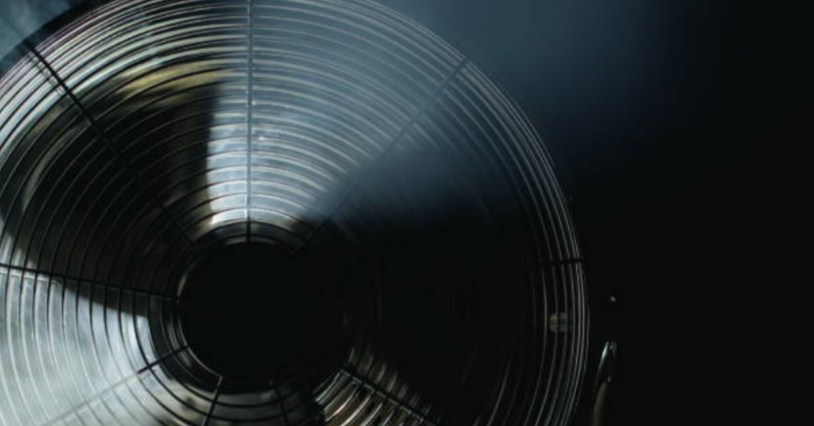
The Ultimate Cooling Debate: Liquid Cooling vs. Fans in High-Performance Systems
Where high-performance computer systems are concerned, cooling your components are important because you want to retain maximum performance at all times, particularly when you are engaging in excessive gaming, rendering, or overclocking activity. The question of liquid cooling vs fans is a rather debatable issue when every solution can be both advantageous and problematic in the technological realm. In this piece we are going to break down the two cooling methods, highlight the positive and negative and allow you to decide on which cooling solution best suits your high-performance system.
Understanding Liquid Cooling vs Fans
Liquid cooling is one of the most advanced methods of heat management whereby the coolant is deployed to transfer the heat off the components (CPU and GPU) among others. The coolant flows around the pipes that are linked with a radiator, where the heat is blown away by fans and recycled. Liquid cooling is more effective than air cooling in large thermal loads with overclocked processors or high-end gaming systems. The primary benefits of liquid cooling are that it has a higher thermal capacity, has a lower audible load, and it can cool faster and more efficiently as compared to air. Nevertheless, it is more costly and needs more complicated installation and care.
Air cooling conversely involves the use of heatsinks and fans to get heat off components. Heatsinks are connected to the air drawing devices like fans (incremental fans to sleeve bearing fans) which absorb the heat emanated by the components. Although air cooling is typically simpler to set up and less expensive than liquid cooling, it may not be able to maintain low temperatures when under a large workload, or when overclocked. Sleeve bearing fans which are generally quieter at slower temperatures compared to ball-bearing fans provide a decent compromise between price and performance. Although not efficient in high loads, air cooling could also be an outstanding solution to a less intensive system.
Efficiency and Performance (Cooling)
This is because cooling solutions efficiency highly determines performance of your system. Comparing liquid cooling systems and fans, liquid cooling systems have the potential of exceeding air coolers in raw cooling capability. The capacity to absorb and transfer a lot of heat is higher in liquid coolant when compared to air. This enables the liquid cooling to efficiently dissipate the thermal generated by over clocked CPU/ GPU or a multi-device high performance. As well, it makes sure that components are kept to the best possible temperatures in heavy-load conditions, avoiding thermal throttling and enhancing performance when using the device in games, 3D rendering, or video editing.
When the thermal workload is high air cooling becomes inefficient. Air coolers usually demand high-speed fans in high-performance situations in order to match, which may lead to a greater amount of noise production along with a drop in efficiency. The sleeve bearing fans are admittedly less noisy when running at low speed, but might not be effective in cooling down extreme heat especially in a system that requires it to operate at high performance capacity most of the time. This contributes to liquid cooling becoming the more dependable one among the fans who need to have the regular and efficient cooling.
Sound and Acoustics
One of the factors that should be considered in liquid cooling vs fans is the noise. Air based cooling, particularly that of high speed fans can be very noisy under maximum load conditions. Noise can be reduced by use of sleeve bearing fans, which are quieter at low speeds than the ball-bearing ones; nevertheless, air coolers as a rule make more noise overall, chiefly when operated at maximum speed. Air cooling may not be attractive to users who want to have a quiet PC configuration, especially in the case of gaming systems that need constant airflow.
However, there is a non-aggressive (quieter) loading experience with liquid cooling. Radiator fans do not work as hard as before since liquid coolants are better at heat loss, and thus, the noise level is reduced. A properly selected liquid cooling system, at least AIO (All-In-One) cooler, might make your system colder and silent compared to more traditional fan-based cooling mechanisms. The pump can be somewhat loud, although in general is less obtrusive than the hum of high-velocity fans, so liquid cooling is suitable to the users who want low-noise operation.
The Price, Installing, and Maintaining
A liquid cooling system is typically more expensive and difficult to set up compared to air cooling. Efficient air coolers with sleeve bearing fans may range between 50 and 100 dollars, and usually the cooler is mounted to the CPU and fan fitted on the motherboard. Air cooling has very little maintenance needs, often simply involving some occasional fan and heatsink dusting to maintain a free flow of air. It is affordable and a simple user solution that has low costs for users who are on a budget or are not keen on getting the best cooling.
The liquid cooling systems, however, have their initial cost. The bare bones of an AIO liquid cooler can cost as little as 100 dollars and increasingly and expensively priced coolers can go up to 150 dollars or more. Pre-packaged liquid loops run a few hundred dollars and are more complicated to install, requiring tubes, pumps, reservoirs along with the radiator and fans. Liquid cooling is also more involved in terms of maintenance, as it will necessitate periodic changes of the coolant, checking the system against leaks and verifying that the pump is operating correctly. AIO coolers are, however, less prone to maintenance than custom loops hence, a good alternative to individuals who prefer the superiority of liquid cooling without any maintenance.
Read also: Choosing the Right Parking Lot Lights for Sale: A Simple Guide to Safer, Smarter Outdoor Areas
Conclusion
The final decision between liquid cooling vs fans can only be made depending on what you need your performance to be, how much you want to spend on it, and also the amount of maintenance you would like to apply. When considering high performance systems that also need the efficient cooling, e.g. overclocked gaming PCs or workstations or any PC that needs high-performance cooling, liquid cooling is to be considered better. It has better thermal efficiency, reduced noise levels and it is more efficient when operating at full load. It is however more expensive and needs more care and therefore is not enticing to people on a budget or who want something simpler.
Sleeve bearing fans reduce costs through air cooling, which has been an option of choice among price conscious individuals or with lower powered systems. It is simpler to put in place, more affordable and does not require much attention. Granted, Air cooling might not support the extreme temperatures that liquid cooling can, on the contrary, it is a decent choice to use during average gaming and daily use, given noise is a factor.
What happens is that, ultimately, the choice is between the use of liquid cooling and fans is a matter of your needs. When it comes to cooling on an overclocked machine or one with heavy loads, then liquid cooling is probably a superior alternative. Air cooling is also capable of doing the job easily and cheaply under simpler and quieter cooling conditions.



